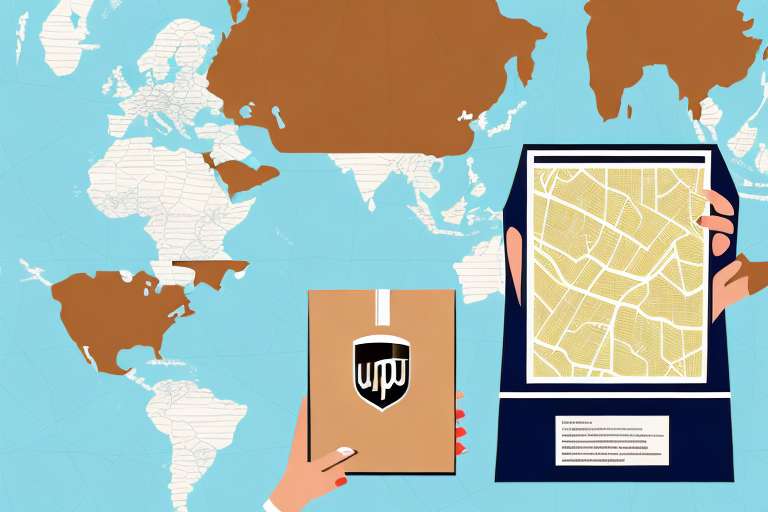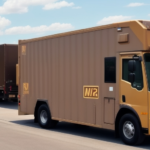Understanding UPS Local Shipping Rates
When shipping packages locally with UPS, it's essential to understand the associated shipping rates. The cost of shipping with UPS varies based on several factors, such as package weight, delivery destination, and shipping type. In this article, we'll provide an in-depth analysis of UPS local shipping rates, how they are calculated, and strategies to save money while avoiding common mistakes.
What are UPS Local Shipping Rates?
UPS Local Shipping Rates refer to the pricing for sending a package through the UPS network within the same city or region. These rates depend on factors including package weight, destination zip code, delivery service type, and requested services like tracking or insurance. It's important to note that UPS local shipping rates can vary significantly based on these and other variables.
Factors that Affect UPS Local Shipping Rates
Several factors influence UPS local shipping rates:
- Package Weight: Heavier packages incur higher shipping costs than lighter ones.
- Destination: Shipping to remote areas or locations outside traditional shipping corridors increases the cost.
- Delivery Service Type: Expedited or faster delivery options, such as UPS Next Day Air, are more expensive than standard services like UPS Ground.
- Package Size: Larger packages occupy more space and require more handling, leading to higher costs.
- Package Value: Higher-value items may need additional security measures, such as signature confirmation, which can increase shipping costs.
- Additional Services: Services like tracking and insurance add to the overall cost.
Additionally, UPS offers discounts for businesses that ship frequently or in large volumes, helping to offset shipping costs. UPS also provides a variety of packaging options, including free boxes and envelopes, which can further reduce shipping expenses.
For more detailed information, you can visit UPS Packaging and Supplies.
How to Calculate UPS Local Shipping Rates
To calculate UPS local shipping rates, you need to know the weight and dimensions of your package, its destination, the type of delivery service you require, and any additional features you need. UPS offers an online shipping calculator that helps you determine the cost by entering the necessary information to obtain a shipping quote.
Here are the steps to calculate your UPS local shipping rates:
- Visit the UPS shipping calculator.
- Enter the origin and destination zip codes.
- Provide the package weight and dimensions.
- Select the desired delivery service (e.g., UPS Ground, UPS Next Day Air).
- Add any additional services (e.g., insurance, tracking).
- Review the estimated shipping cost.
Keep in mind that the quoted rate is an estimate, and the final shipping cost may vary based on additional charges or fees.
Comparing UPS Local Shipping Rates with Other Carriers
When shipping a package locally, it's advisable to compare UPS local shipping rates with other carriers such as FedEx and USPS. Rates can significantly differ between carriers, and shopping around can help you save money. Before deciding, research different carriers and compare their rates, delivery times, and additional services to ensure you are getting the best value.
Consider the following when comparing shipping rates:
- Weight and Size Constraints: Some carriers have specific restrictions that may impact your shipping costs.
- Service Features: Different carriers offer varying levels of tracking, insurance, and delivery guarantees.
- Discounts and Promotions: Look for available discounts based on shipping volume or special promotions.
- Reputation and Reliability: Ensure the carrier is reputable for on-time deliveries and good customer service.
According to the 2023 report by Statista, UPS holds a significant market share in the U.S. package delivery industry, making it a competitive choice against other major carriers.
How to Save Money on UPS Local Shipping Rates
Here are several strategies to reduce your UPS local shipping costs:
- Choose Cost-Effective Services: Opt for services like UPS Ground instead of expedited shipping options to save on costs.
- Optimize Packaging: Use appropriately sized packaging to avoid additional fees for oversized or overweight packages.
- Utilize Online Shipping Tools: Use UPS online tools that offer discounts or enable rate comparisons among different carriers.
- Leverage Business Discounts: If you ship in large volumes, qualify for UPS business discounts to lower your shipping rates.
- Take Advantage of Promotions: Keep an eye on any loyalty programs or promotions offered by UPS to reduce shipping costs.
Additionally, you can negotiate rates directly with UPS if you are a high-volume shipper. To do this, contact your UPS account representative to discuss your shipping needs and explore options for reduced rates based on your shipping volume. Furthermore, using services like UPS Smart Pickup allows you to schedule pickups only when you have packages to send, avoiding the costs of daily pickups.
Another important tip is to accurately weigh and measure your packages before shipping. Overestimating can lead to unnecessary higher costs, while underestimating may result in additional fees or shipping delays. Use a reliable scale and measuring tape to ensure precise measurements.
Tips for Negotiating Better UPS Local Shipping Rates
For frequent shippers, negotiating better rates with UPS is possible by following these tips:
- Contact Your UPS Representative: Reach out to your UPS account manager to discuss your shipping needs and inquire about potential discounts based on your shipping volume.
- Leverage Shipping Volume: High-volume shippers are often eligible for more significant discounts. Present your shipping volume data to negotiate better rates.
- Flexible Shipping Schedules: Avoid peak shipping times by having flexibility in your shipping schedule, which can help secure lower rates.
- Consolidate Shipments: Combining multiple shipments into a single larger shipment can qualify you for volume discounts.
- Compare with Other Carriers: Use competitive offers from other carriers as leverage during negotiations to obtain better rates from UPS.
Remember to be well-informed about your shipping needs and the market rates before initiating negotiations. Being prepared increases the likelihood of securing favorable terms.
Understanding Different Types of UPS Local Shipping Services
UPS offers various local shipping services tailored to different needs and budgets:
- UPS Ground: Provides reliable and cost-effective shipping within the U.S. and Puerto Rico.
- UPS Next Day Air: Guarantees package delivery by the next business day.
- UPS 2nd Day Air: Delivers packages within two business days.
- UPS Worldwide Express: Offers fast and reliable international shipping.
- UPS My Choice: Allows customization of package delivery, including rerouting and scheduling.
Additionally, UPS provides specialized shipping services for specific industries, such as:
- Healthcare: Temperature-controlled shipping for sensitive medical supplies.
- Automotive: Just-in-time delivery services for automotive parts.
- Retail: Distribution solutions tailored for e-commerce businesses.
By utilizing these specialized services, businesses can ensure the safe and efficient delivery of their products.
Pros and Cons of Using UPS for Local Shipping
Considering UPS for your local shipping needs comes with its own set of advantages and disadvantages:
- Pros:
- Wide range of shipping services to meet various needs.
- Reliable tracking and insurance options.
- Consistent and dependable delivery times.
- Extensive delivery network across the U.S.
- Commitment to sustainability initiatives, such as investing in alternative fuel vehicles and optimizing routing to reduce emissions.
- Cons:
- Higher shipping rates compared to some other carriers.
- Occasional customer service challenges.
- Complex rate structures that may be confusing for some users.
When deciding whether to use UPS, weigh these pros and cons against your specific shipping requirements. Additionally, UPS's commitment to sustainability efforts allows businesses to support eco-friendly practices by choosing their services.
Common Mistakes to Avoid when Using UPS for Local Shipping
To ensure a smooth shipping experience with UPS, avoid these common mistakes:
- Poor Packaging: Not properly packaging items can lead to damaged or lost packages and increased shipping costs.
- Inaccurate Shipping Information: Providing incorrect shipping details may result in delays or failed deliveries.
- Choosing the Wrong Shipping Service: Selecting an inappropriate service can lead to higher costs or missed delivery deadlines.
- Ignoring Discount Opportunities: Failing to take advantage of available discount programs and promotions can result in unnecessary expenses.
- Overlooking Delivery Timeframes: Not checking the delivery time frames for each shipping service may result in packages arriving later than intended.
- Poor Labeling: Inadequately labeling packages can cause confusion and delays during the shipping process.
By avoiding these mistakes, you can ensure that your local shipments via UPS are handled efficiently and cost-effectively.
How to Track Your UPS Local Shipments
UPS provides a variety of tools and services to help you track your local shipments effectively:
- UPS Website: Use the UPS website to enter your tracking number and view the real-time status of your package.
- UPS Mobile App: Access tracking information on the go through the UPS mobile app, which offers notifications about delivery status and any changes or delays.
- UPS My Choice for Business: Businesses can utilize advanced tracking and management tools, including detailed reporting and analytics, to monitor their shipments.
The most useful feature of UPS tracking is the ability to see the exact location of your package in real-time. This allows you to plan for someone to be available to receive the package or to know its estimated arrival time. Additionally, tracking information allows you to reroute the package to a different address or to a nearby UPS store for pickup if you're unavailable to receive it at the original destination.
Utilizing these tracking tools ensures that your UPS local shipments are delivered on time and without unexpected issues.






















